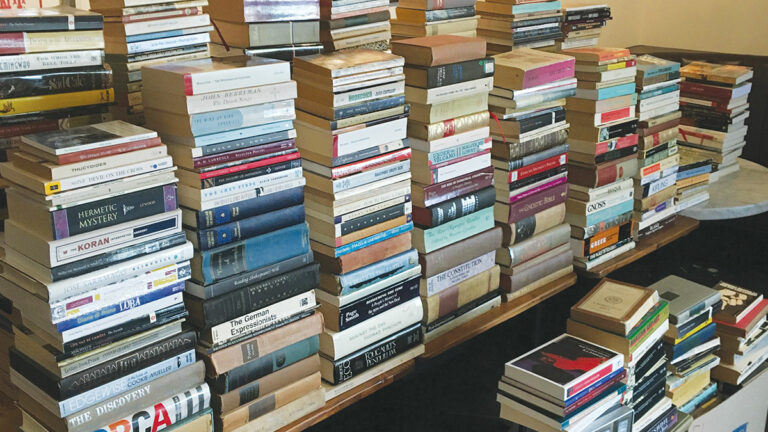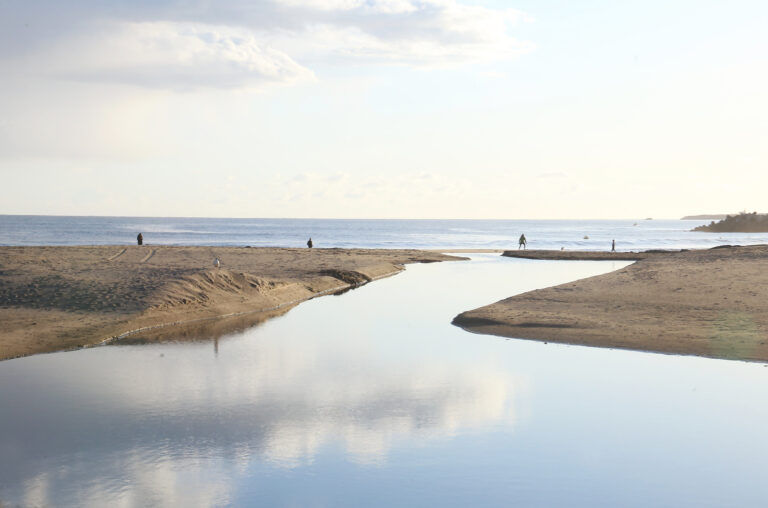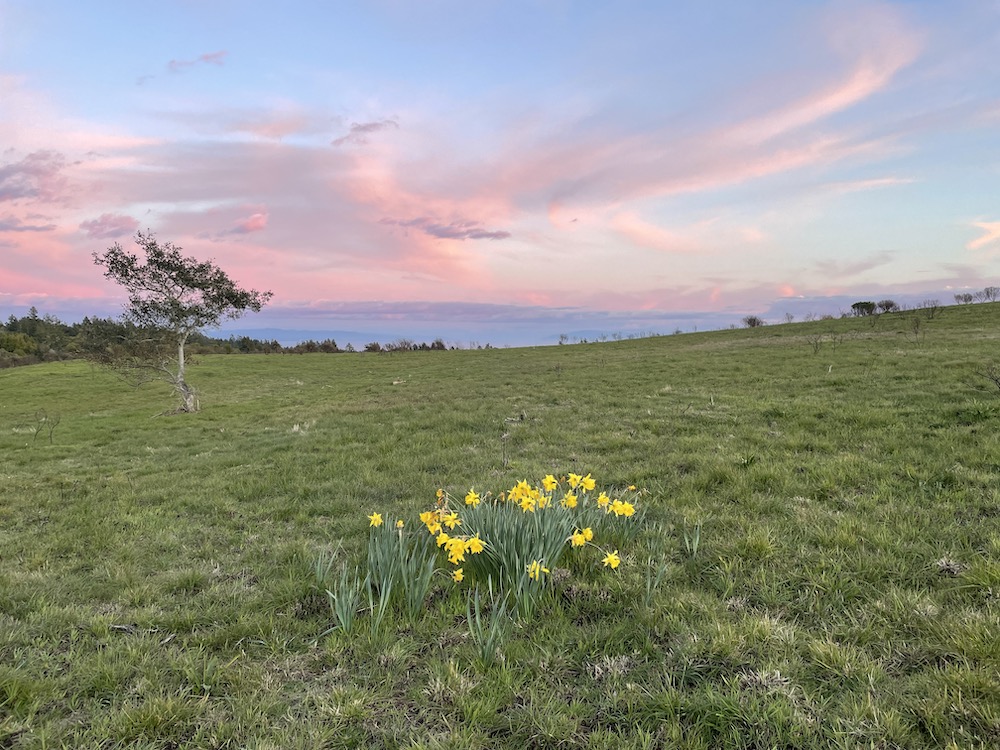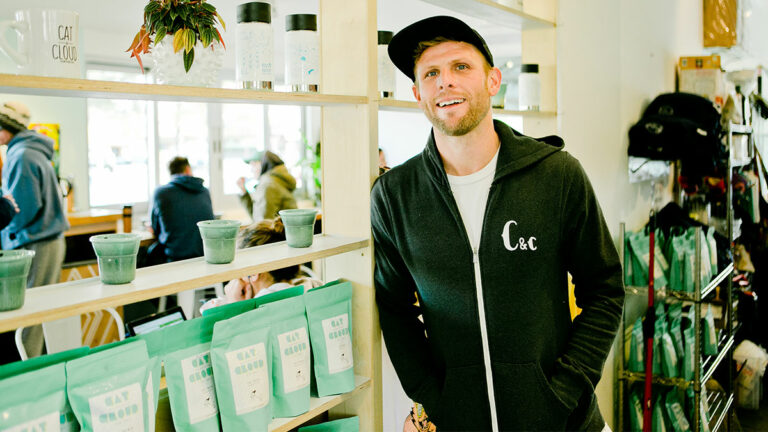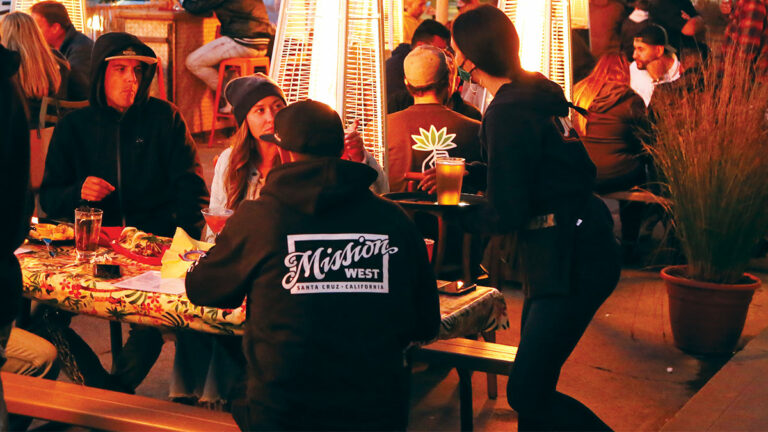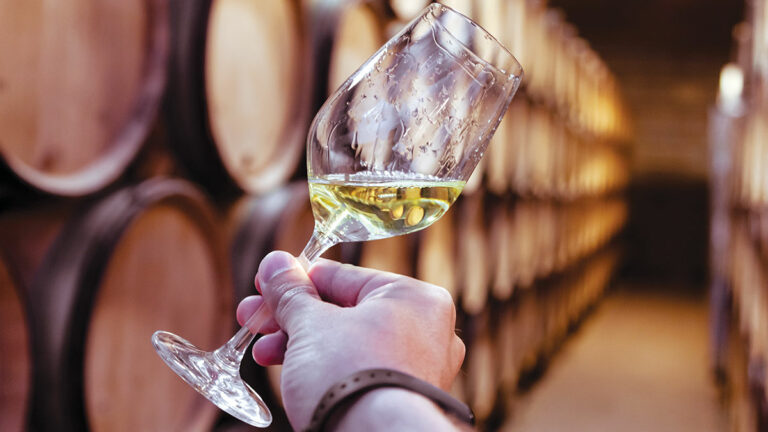A weekly guide to what’s happening.
ARTS AND MUSIC
BEYOND THE GRAVE: MUSICAL PERFORMANCES Join the Santa Cruz Museum of Art and History’s new series of multidisciplinary performances at Evergreen Cemetery as artists connect Santa Cruz County’s past with the present moment. Artists and performers introduce new, site-specific work for this series of intimate performances. Inspired by the stories and landscape of the historic Evergreen Cemetery, dancers, spoken word artists, and musicians reimagine the space with new commissions that are inspired by the past while exploring our future. For the inaugural weekend of Beyond Grave, we have commissioned opera singer Akindele Bankole, avant-garde harpist Sabine Silver and bilingual folk band “Los Brownies.” Each artist has crafted a site-specific performance that will have you swaying in your seat, looking upon the cemetery with new eyes. Exploring their personal connections to the history found within the cemetery grounds, these works will connect us all to the people—past and present—of Santa Cruz County. Learn more about the performing artists at santacruzmah.org/events/beyond-the-grave-music. Saturday, April 10, 4pm. Sunday, April 11, 4pm. Evergreen Cemetery, 261 Evergreen St., Santa Cruz. $20 General Admission, $12 members.
T BONE MOJO BAND DAVENPORT ROADHOUSE Featuring professional veterans Fuzzy Oxendine, Les Rosenthal, T Bone Mojo, Rick Hornbeck. Fun and groovin’ up-energy four-piece band often featuring special guests geared to getting the party going, with folks tapping their feet and on the dance floor. Saturday, April 10, 5-8pm. Davenport Roadhouse, 1 Davenport Ave., Davenport.
TAKE AWAYS: ART TO GO! Pajaro Valley Arts (PVA) invites you to join us for our fundraising exhibit, Take Aways: Art to Go! This diverse annual invitational exhibit features artists from Santa Cruz County. The art on view includes a wide variety of mediums, including sculpture, drawing, ceramics, fiber, mixed media, encaustic (wax), printmaking, photography, glasswork, and more. Artworks are priced to fit many budgets. In this wildly popular show, everyone benefits; you take home fabulous art the day of your purchase, while supporting PVA and local artists, and new art comes into the gallery every day. This exhibit features 76 of the county’s most notable artists. Gallery hours: Friday, Saturday and Sunday 11am-4pm, by appointment only. To request an appointment for you and/or your group, please visit PVA’s website at pvarts.org/appointment. If you have any additional questions or would like to cancel a scheduled appointment, please contact our office manager, Brianna Flores, at: br*****@****ts.org. Ten person max group size; masks and social distance required. Friday, April 9, 11am-4pm-Sunday, April 11, 11am-4pm.
THE ROLL UP COMEDY TOUR AT THE HOOK The magical mystery Roll Up Comedy Tour is back this Sunday as we celebrate our anniversary weekend. Pull up your car and experience an afternoon of laughter and high vibes with comedy by the dopest comedians in all of Northern California. You are not going to want to miss the laughter. Parking is first-come, first-serve, so roll up early, park, and enjoy! Sunday, April 11, Noon-1:30pm. The Hook Outlet Dispensary, 4170 Gross Road, Capitola. Free.
TOBY GRAY JACK’S PATIO AT DREAM INN Paradise with ocean views, great food and drink! Cool, rockin’ to mellow with a repertoire of several hundred of your favorite songs and fun heartfelt originals. Toby presents songs made famous by the Eagles, Beatles, Bob Dylan, Peter Rowan, Bob Marley, and many other classic artists, adding his own interpretations and owning the songs, paying tribute to some of the founding voices of Motown, rhythm & blues, country, and rock. Great music and stories of touring with It’s A Beautiful Day, Dick Clark Productions, and a multitude of characters from San Francisco’s Summer of Love and LA music scenes. Artist sights and sounds available at highwaybuddha.com. Sunday, April 11, 5:30-8:30pm. The Dream Inn, 175 W Cliff Drive, Santa Cruz.
COMMUNITY
COLLECTIONS CLOSE-UP: THE LIFE AND LEGACY OF RANDALL MORGAN Join Kathleen Aston, collections manager at the Santa Cruz Museum of Natural History, and Chris Lay, director of the Kenneth S. Norris Center for Natural History, for an exploration of Randall Morgan’s life and legacy, including his collections, taxidermy, and conservation efforts. There are few names in our local naturalist community that are as universally revered as that of Randall Morgan. Also known as Randy or R, Morgan was a pillar of the local natural history community. Though he passed away a few years ago, his influence on the natural world and those who celebrate it in Santa Cruz is evident from the Sandhills that his activism helped to save, to the local chapter of the California Native Plant Society that he helped found, to the Santa Cruz Museum of Natural History where he worked as a taxidermist to pay for studying linguistics at UCSC. His legacy also lives on in the collections of the Kenneth S. Norris Center for Natural History. This month’s Santa Cruz Museum of Natural History Collections Close-Up is being made available to the general public in sponsorship of the exhibit “Look. Act. Inspire.,” celebrating the naturalists of Santa Cruz County. It is presented in partnership between the Kenneth S. Norris Center for Natural History, the San Lorenzo Valley Museum and the Santa Cruz Museum of Natural History. Visit santacruzmuseum.org/4-13-collections-close-up-the-life-and-legacy-of-randall-morgan to register for the Zoom event. Tuesday, April 13, 6-7pm.
GREY BEARS BROWN BAG LINE If you are able-bodied and love to work fast, this is for you! Grey Bears could use more help with their brown bag production line on Thursday and Friday mornings. As a token of our thanks, we make you breakfast and give you a bag of food, if wanted. Be at the warehouse with a mask and gloves at 7am, and we will put you to work until at least 9am. Call ahead if you would like to know more. greybears.org. 831-479-1055. Thursday, April 8, 7am.
QINGMING COMMUNITY WORKDAY Join the Santa Cruz Museum of Art and History (MAH) Evergreen restoration team on a community workday to celebrate and honor the Chinese cultural holiday Qingming. The Qingming Festival, also called Tomb Sweeping Day or, literally, “Pure Brightness” Festival in English, pays respect to ancestors and celebrates the warming weather of spring. It’s a time for honoring the past with a spirit of celebration that includes space for both reflection and renewal. Drop in and join MAH staff and the Evergreen Cemetery Committee, a team of dedicated volunteers, in honoring this celebration by cleaning tombstones and the cemetery grounds. Tools and gloves will be provided, but you’re invited to bring your own if you prefer. Friday, April 9, 10am-noon. Evergreen Cemetery, 261 Evergreen St., Santa Cruz.
SALSA SUELTA FREE ZOOM SESSION Keep in shape! Weekly online session in Cuban-style Salsa Suelta for experienced beginners and up. May include mambo, chachacha, Afro-Cuban rumba, orisha, son montuno. No partner required, ages 14 and older. Contact to get the link. salsagente.com. Thursday, April 8, 7pm.
SANTA CRUZ ROTARY CLUB BOURBON AND BONES DRIVE-THRU FUNDRAISER Skip the cooking and enjoy a delicious BBQ dinner for a great cause! The Rotary Club of Santa Cruz is hosting a Bourbon and Bones Drive-Thru Dinner Fundraiser to raise grant funds that will support local nonprofits. Your donation of $135 gets you a fantastic dinner for two. A donation of $75 will get you a delicious dinner for one. There will be BBQ ribs, chicken, vegetarian options, coleslaw, mac ‘n’ cheese, beans, and s’mores kits for dessert. Purchase your Eventbrite ticket by Tuesday, April 6. Pick up your dinner at the Santa Cruz Elks Lodge parking lot, 150 Jewell St., Santa Cruz. Proceeds from this event will support grant funding for local nonprofits. Previous grant recipients include O’Neill Sea Odyssey, Hopes Closet of Santa Cruz, Kid Power, Santa Cruz Art League, Bonny Doon Fire and Rescue, Big Brothers & Big Sisters, Homeless Garden Project and many others. More info at bit.ly/SCRotaryDinner. Saturday, April 10, 2-3pm.
TENANTS’ RIGHTS HELP Tenant Sanctuary is open to renters living in the city of Santa Cruz with questions about their tenants’ rights. Volunteer counselors staff the telephones on Tuesdays, Thursdays and Sundays from 10am-2pm. Tenant Sanctuary works to empower tenants by educating them on their rights and providing the tools to pursue those rights. Tenant Sanctuary and their program attorney host free legal clinics for tenants in the city of Santa Cruz. Due to Covid-19 concerns, all services are currently by telephone, email or Zoom. For more information visit tenantsanctuary.org or follow us on Facebook at facebook.com/tenantsanctuary. 831-200-0740. Thursday, April 8, 10am-2pm. Sunday, April 11, 10am-2pm. Tuesday, April 13, 10am-2pm.
VIRTUAL EVENT: MOVIE NIGHT: LIVING WHILE DYING Join Hospice of Santa Cruz County for a free documentary screening, virtually via Zoom, followed by a discussion with the filmmaker and a panel of local experts. Note from the filmmaker: “As a baby boomer, I became curious about death and decided to pick up my camera and film four friends with terminal illnesses who chose to live out their days in hospice care at home. Along the way, I sought the advice of an aboriginal elder and a deathwalker in Australia, witnessed a mass cremation in Bali and asked my 90-year old mother to sit in a coffin while we discussed her end-of-life wishes.” This will be a virtual event held over Zoom. It is free with registration. Register at zoom.us/webinar/register/WN_c50rwcBiTdy2kPghHEP3hw. Wednesday, April 7, 6pm.
GROUPS
CAREGIVER SUPPORT GROUP Support groups create a safe, confidential, supportive environment or community and a chance for family caregivers to develop informal mutual support and social relationships as well as discover more effective ways to cope with and care for your loved one. Meeting via Zoom and phone. Who may benefit from participating in the support group? Family caregivers who care for persons with Alzheimer’s disease or another dementia, those who would like to talk to others in a similar situation, and those who need more information, additional support and caregiving strategies. To register or for questions please call 800-272-3900. Wednesday, April 7, 5:30pm. Saturday, April 10, 10-11:30am.
COMPASSIONATE FRIENDS OF SANTA CRUZ Parents of a child who died at any age, from any cause, any length of time ago, are invited to join The Compassionate Friends of Santa Cruz for our monthly grief support meeting. Opening circle followed by smaller connection groups. Sharing is optional. Grief materials available. Bereaved grandparents and adult siblings also welcome. Non-religious. To attend any TCF of Santa Cruz Zoom meeting, please contact us via email at TC**********@***il.com at least 24 hours in advance to receive the link. Monday, April 12, 7-8:30pm.
ENTRE NOSOTRAS GRUPO DE APOYO Entre Nosotras support group for Spanish-speaking women with a cancer diagnosis. Meets twice monthly. Registration required: 831-761-3973. Friday, April 9, 6pm.
WOMENCARE ARM-IN-ARM Cancer support group for women with advanced, recurrent, or metastatic cancer. Meets every Monday at 12:30pm via Zoom. All services are free. Registration required: Contact WomenCARE at 831-457-2273 or online at womencaresantacruz.org. Monday, April 12, 12:30pm.
WOMENCARE TUESDAY SUPPORT GROUP WomenCARE Tuesday Cancer support group for women newly diagnosed and through their treatment. Meets every Tuesday, currently on Zoom. Registration required: Contact WomenCARE at 831-457-2273 or online at womencaresantacruz.org. Tuesday, April 13, 12:30-2pm.
WOMENCARE WRITING CIRCLE Writing Circle for women with a cancer diagnosis. Meets on the second Saturday every other month. Registration required. Contact WomenCARE at 831-457-2273 or online at womencaresantacruz.org. Saturday, April 10, 10am-1pm.
WOMENCARE: LAUGHTER YOGA Laughter yoga for women with a cancer diagnosis. Meets every Wednesday at 3:30 via Zoom. Registration required by contacting 831-457-2273. Wednesday, April 7, 3:30-4:30pm.
OUTDOOR
LABSIDE CHATS: A CONVERSATION WITH A SCIENTIST, FEATURING KATIE KOBAYASHI Tune in for the Seymour Center’s next Labside Chat with Katie Kobayashi, Ph.D. candidate in the Ecology and Evolutionary Biology department at UCSC and graduate student researcher with the Fisheries Collaborative Program. Discover the differences between a steelhead and a rainbow trout, and what it means for the ecology and conservation of California’s coastal watersheds. Join the conversation and submit your questions in advance for Katie, then watch the conversation to hear the answers during the live chat. To submit your questions in advance for Katie, and to watch the live conversation, visit: calendar.ucsc.edu/event/labside_chats_katie_kobayashi. Labside Chats are offered at no charge. Thursday, April 8, 11am.
ROCKIN’ POP-UP: THE MOON Geology literally means the study of the Earth, so why are we digging into the Moon for this month’s Rockin’ Pop-Up? Well, as the Geology Gents put it, “the moon is basically the Earth.” Say what? Don’t worry, all will be revealed. This month, learn about the formation of our moon and how scientists study it. About the Series: Join the Geology Gents, Gavin and Graham, for monthly conversations about rocks live on Facebook. Each month we’ll explore a different geologic topic, from Santa Cruz formations to tips for being a more effective rockhound. Graham Edwards and Gavin Piccione are Ph.D. candidates in geochronology with the Department of Earth and Planetary Sciences at UCSC. Submit your questions ahead of time by emailing ev****@*************um.org and feel free to include pictures of rocks you’d like identified. santacruzmuseum.org/4-7-rockin-pop-up-the-moon. Wednesday, April 7, 3pm.
VIRTUAL YOUNGER LAGOON RESERVE TOURS Younger Lagoon Reserve is now offering a virtual tour in both English and Spanish. This virtual tour follows the same stops as the Seymour Marine Discovery Center’s docent-led, in-person hiking tour, and is led by a UCSC student! Virtual Younger Lagoon Reserve tours are free and open to the public. Part of the University of California Natural Reserve System, Younger Lagoon Reserve contains diverse coastal habitats and is home to birds of prey, migrating sea birds, bobcats and other wildlife. See what scientists are doing to track local mammals, restore native habitat, and learn about the workings of one of California’s rare coastal lagoons. Access the tours at seymourcenter.ucsc.edu/visit/behind-the-scenes-tours/#youngerlagoon. Sunday, April 11, 10:30am.



